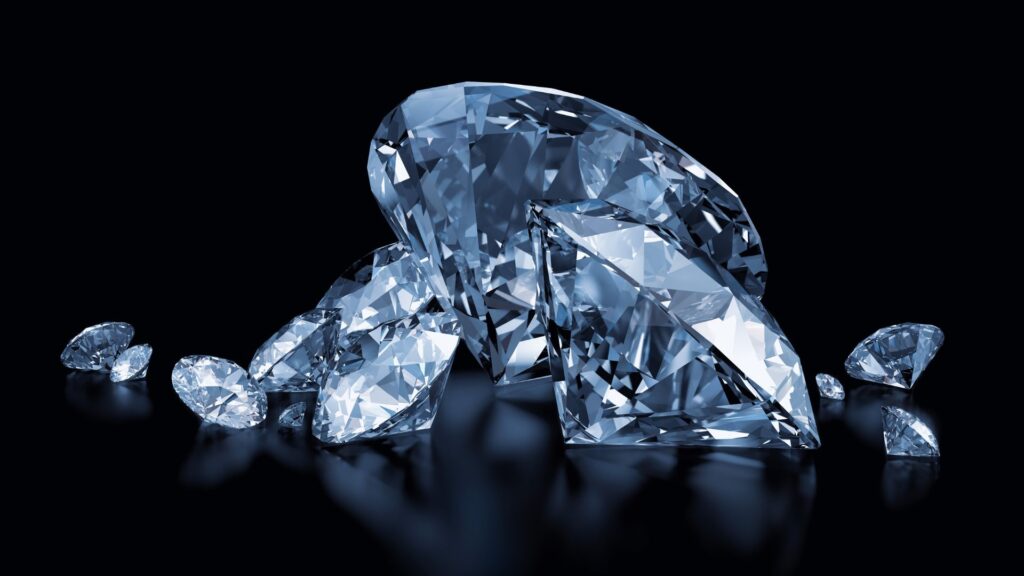Introduction
Diamond photography is an intricate art that requires precision and expertise. The brilliance, fire, and scintillation of diamonds pose unique challenges that differentiate diamond photography from other types of photography. Capturing these precious gems in their true splendor is crucial for jewelers, gemologists, and anyone interested in showcasing diamonds.
The challenge lies in the diamond’s reflective nature, the fine details, and the need for optimal lighting to highlight its facets. This guide aims to provide an in-depth understanding of the techniques and equipment necessary for capturing stunning diamond photographs.
Understanding Diamonds
Types of Diamonds
Natural Diamonds: Formed over billions of years, these diamonds are created under extreme pressure and temperature deep within the Earth.
Synthetic Diamonds: Also known as lab-grown diamonds, these are created in controlled environments and possess the same physical and chemical properties as natural diamonds.
Key Characteristics
Cut: Refers to how well a diamond’s facets interact with light. A well-cut diamond will exhibit optimal brilliance.
Color: Diamonds range from colorless to shades of yellow and brown. Colorless diamonds are the most desirable for their purity.
Clarity: Indicates the presence of internal or external imperfections. Higher clarity diamonds have fewer inclusions and blemishes.
Carat: Measures the diamond’s weight. Larger diamonds are rarer and typically more valuable.
Equipment for Diamond Photography
Cameras
DSLR: Digital Single-Lens Reflex cameras are popular for their versatility and image quality.
Mirrorless: These cameras are lighter and offer high-quality images, making them a good choice for diamond photography.
Lenses
Macro Lenses: Ideal for capturing the intricate details of diamonds due to their close-focusing capabilities.
Prime Lenses: Provide sharp images and are excellent for achieving high clarity and detail.
Lighting
Natural Light: Offers a soft and even light that can enhance a diamond’s natural brilliance.
Artificial Light: Allows for greater control over lighting conditions. LED lights and specialized photography lights are commonly used.
Accessories
Tripods: Essential for stabilizing the camera and avoiding motion blur.
Light Tents: Help diffuse light evenly and minimize reflections.
Reflectors: Used to direct light and enhance the diamond’s sparkle.
Setting Up the Shoot
Choosing the right background is crucial to make the diamond stand out. A clean, uncluttered background, often black or white, works best. Preparing the diamond involves cleaning it thoroughly to remove any dust or fingerprints that can affect the final image.
Arranging the lighting is perhaps the most critical aspect. Positioning lights at different angles can help highlight the diamond’s facets and enhance its brilliance. The camera should be positioned to capture the diamond from the best angle, typically from above or at a slight tilt.
Techniques for Capturing Brilliance
Focus Stacking: This technique involves taking multiple shots at different focus points and combining them to ensure the entire diamond is in sharp focus.
Depth of Field: A shallow depth of field can isolate the diamond from the background, while a deeper depth of field ensures more of the diamond is in focus.
Exposure Settings: Adjusting the exposure is key to preventing overexposure, which can wash out the diamond’s details.
White Balance: Correct white balance ensures that the diamond’s true colors are accurately represented.
Post-Processing
Software Options
Adobe Photoshop: Powerful software for detailed editing and retouching.
Lightroom: Excellent for batch processing and basic edits.
Techniques
Color Correction: Ensures the diamond’s colors are accurate and vibrant.
Sharpening: Enhances the diamond’s details and facets.
Removing Imperfections: Cleaning up any unwanted reflections or spots.
Troubleshooting Common Issues
Avoiding Reflections
Using a light tent or positioning lights carefully can help minimize unwanted reflections.
Managing Overexposure
Adjusting the exposure settings and using diffused lighting can prevent overexposure.
Handling Blurry Images
A stable tripod and proper focus techniques can help achieve sharp, clear images.
Creative Approaches
Using Props
Incorporating props such as jewelry settings or creative backgrounds can add interest to the photos.
Experimenting with Angles
Trying different angles can reveal new facets and enhance the diamond’s beauty.
Incorporating Movement
Using techniques like light trails or motion blur can create dynamic and unique images.
Case Studies
Learning from professional photographers and analyzing successful diamond photography can provide valuable insights and inspiration.
Expert Insights
Interviews with gemologists and advice from professional photographers can offer expert tips and techniques for capturing the brilliance of diamonds.
Conclusion
Capturing the true brilliance of diamonds requires patience, precision, and the right techniques. By understanding the characteristics of diamonds, using the appropriate equipment, and employing effective photography and post-processing methods, anyone can create stunning diamond images. Practice and experimentation are key to mastering diamond photography.














